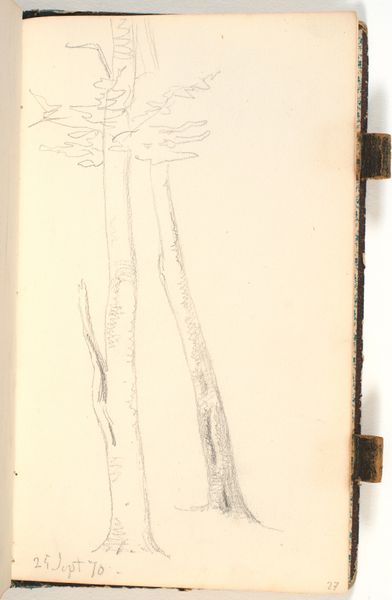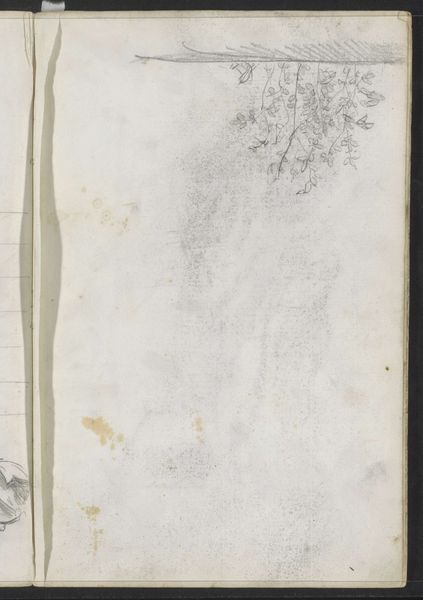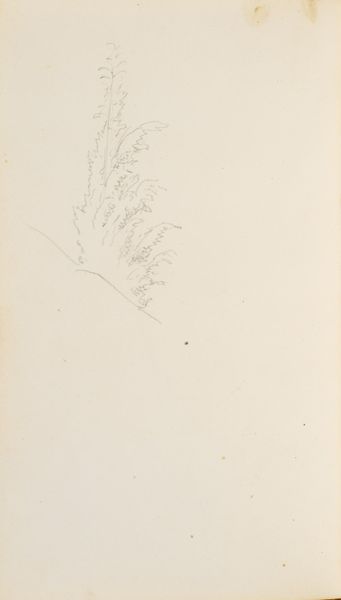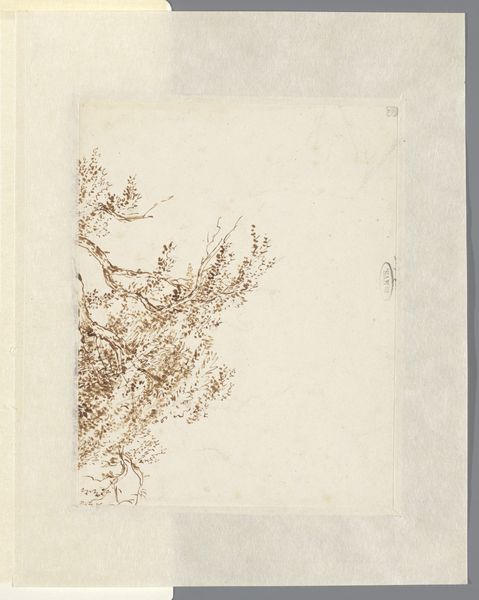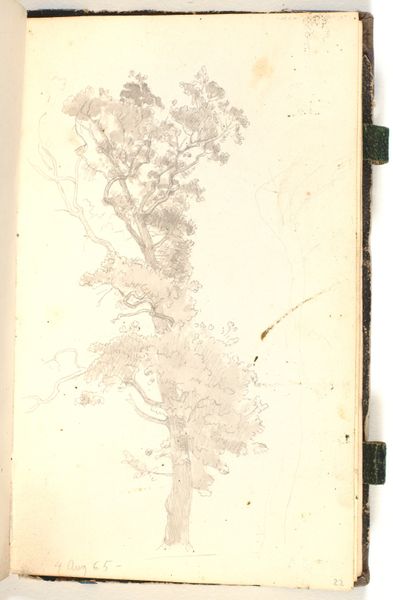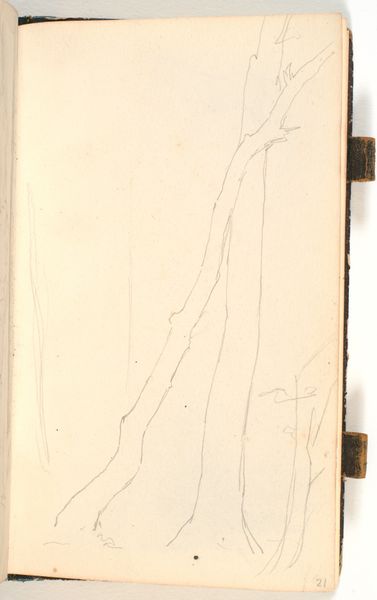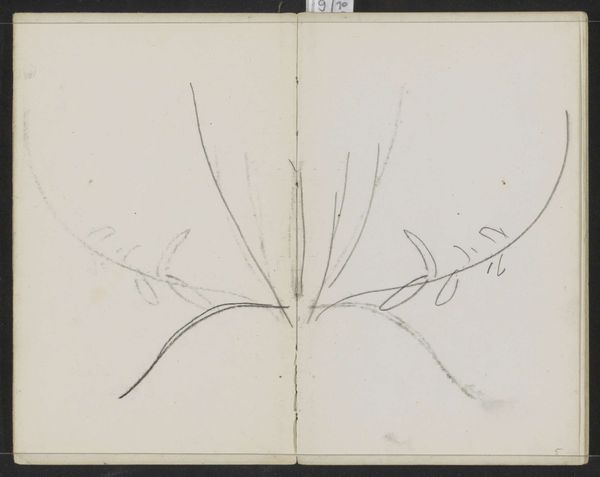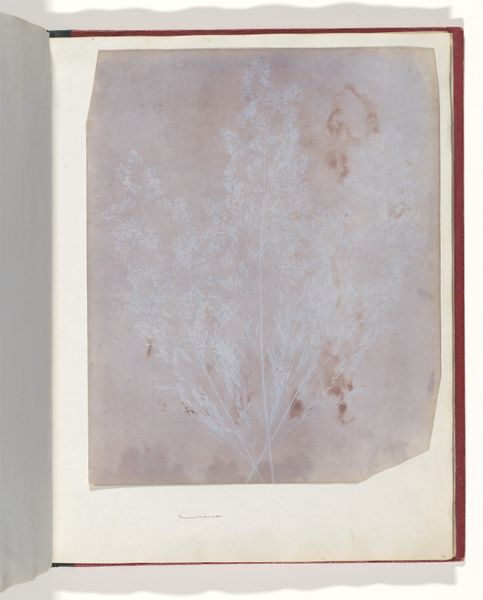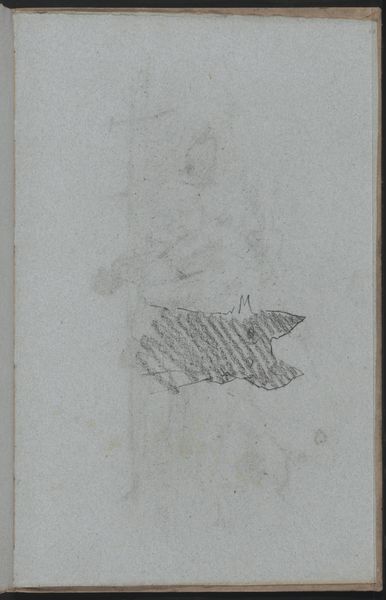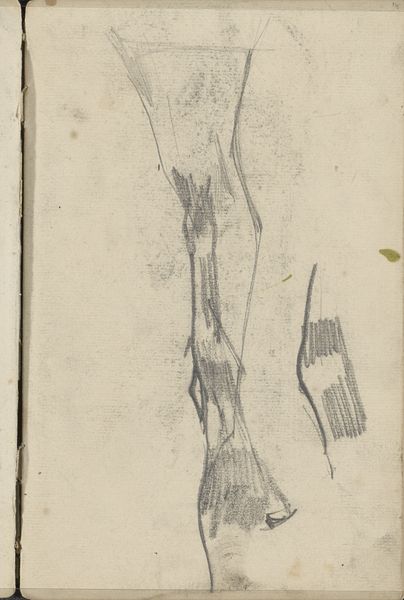
drawing
#
drawing
#
toned paper
#
light pencil work
#
pencil sketch
#
personal sketchbook
#
ink drawing experimentation
#
pen-ink sketch
#
sketchbook drawing
#
watercolour illustration
#
sketchbook art
#
watercolor
Dimensions: 163 mm (height) x 100 mm (width) (bladmaal)
Curator: Well, the first thing I notice is its stark simplicity. It's just a single tree trunk, really minimal, almost fragile. Editor: Indeed. This is "Et slankt nøgent træ," which translates to "A slender bare tree." P.C. Skovgaard created it around 1865. What we’re seeing is a study, likely from a personal sketchbook. Curator: A sketchbook, yes. That explains the intimacy. I feel like I’ve stumbled upon a private moment of observation, him just capturing what he saw without any grand statement. It feels…quietly powerful. I like the delicate use of line. Editor: Absolutely. Skovgaard, although associated with the Golden Age of Danish Painting focused a good deal of his artistic production around national romanticism. He believed art should embrace landscapes, forests and rural areas to encourage patriotism and consciousness among Danes. You often find these types of sketches, where artists carefully observed the structure and essence of trees, as ways of studying the building blocks of nature. Curator: It’s fascinating to think of it in the context of national identity. To me it feels like an ode to resilience, even in sparseness. This lone tree, exposed, unadorned. You see those knots, little details he captured along the trunk of the tree—there is so much character there. Editor: Exactly. Also, bear in mind how idealized landscape painting was at this period in time; it served social and political purposes in constructing a visual narrative for the country. Depicting very old trees served almost like metaphors to the roots and strength of their communities. This also allowed the artist a space to meditate on questions about society while seemingly discussing something non-political like the shape or form of a tree. Curator: Hmmm...so beyond the surface level observation, could it serve as a reflection on Danish identity around the time? Editor: Possibly. He does it in a way that resists overt nationalistic tropes but nevertheless conveys an important connection to the landscape and the essence of nature. The lack of bombast makes it perhaps even more effective. Curator: Perhaps. And this almost feels as though it still lingers within us now, centuries later, a shared sensibility to solitude and the quiet poetry of survival. Editor: Right. It reveals something about us, perhaps. As you mentioned before, there’s an inherent and profound human experience attached to our encounters with trees. Thanks to artists such as Skovgaard, even an apparently simple work on paper invites consideration and insight into how we shape and perceive identity, resilience, and the power of the natural world.
Comments
No comments
Be the first to comment and join the conversation on the ultimate creative platform.

